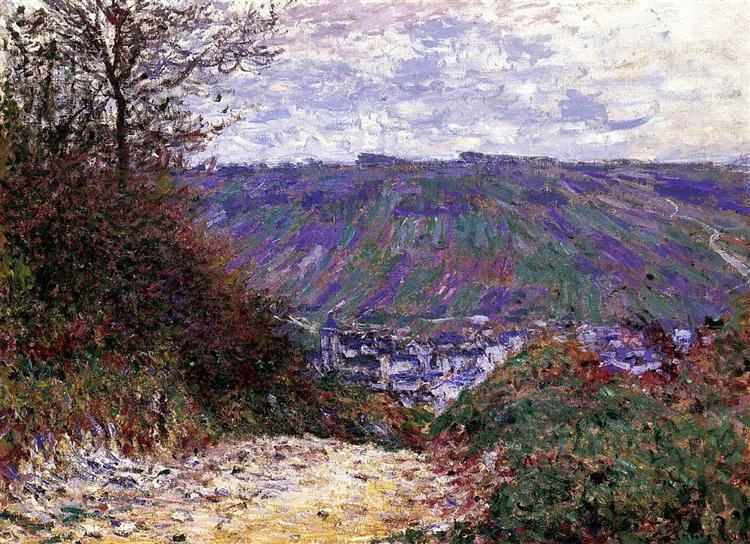Description
The painting "Camino in Giverny" by Claude Monet, created in 1885, is a sublime testimony of the ability of the ability of master Impressionist to capture the poetic essence of nature through its characteristic use of color and light. This work, which represents a winding path immersed in the lush vegetation of its garden in Giverny, stands out not only for its visual beauty, but also for the intimacy of the scene it evokes.
The composition of the painting focuses on a path that opens as it advances towards the bottom, leading the viewer's gaze towards what could be a secret corner of nature. Monet uses a subtle perspective that invites contemplation, suggesting the viewer's desire to follow this path and explore the surrounding landscape. On both sides of the road, rich green shades are arranged that give life to trees and shrubs, while loose and fluid brushstrokes transmit the immediacy and the vibrant energy of the natural environment.
The use of color is particularly notable in this work. Monet uses a vibrant palette that covers from deep and nuanced green to vegetation to yellow and golden tones that illuminate the path, suggesting the presence of sunlight through foliage. This interaction between light and shadow becomes a vital element of painting, contributing to an atmosphere of warmth and serenity. Through these chromatic elections, Monet not only portrays Giverny's natural beauty, but also evokes a sense of peace and harmony that characterizes his artistic vision.
It is interesting to observe that in this work there are no human figures, which reinforces the idea of loneliness and intimate connection with the natural space. This approach consolidates Monet's legacy as a painter who prioritized the sensory experience of the environment on human narratives. This path, free of distractions, comes to symbolize the contemplative journey that every person can undertake when joining nature.
Monet, whose career flourished in the second half of the nineteenth century, was one of the pioneers of impressionism, a movement that sought to break the conventions of academic art of the time. Through works such as "Camino in Giverny", the artist explores the theme of light and atmosphere in painting, a trip that finds parallels in his series of Neenufares and in other works set in his garden. Monet's admiration for his immediate environment and his obsession with capturing the passage of time and variations in light throughout the day are manifested fundamentally in this piece.
In his period in Giverny, Monet dedicated himself to developing a garden that became his source of inspiration, and "on the way to Giverny" is a direct result of his commitment to the observation of nature. The personal connection that the artist established with this landscape not only influenced his style, but also invites us to consider how the close environment can resonate in artistic creation.
In short, "Camino in Giverny" by Claude Monet is not just a representation of a path in a garden. It is a tribute to nature, luminosity and peace that can be found in the simple beauty of the world around us. The work encapsulates a visual meditation on harmony between man and its surroundings, thus becoming a masterpiece that continues to resonate with contemporary spectators.
KUADROS ©, a famous paint on your wall.
Hand-made oil painting reproductions, with the quality of professional artists and the distinctive seal of KUADROS ©.
Reproduction service paintings With a guarantee of satisfaction. If you are not completely satisfied with the replica of your painting, we refund your money 100%.

